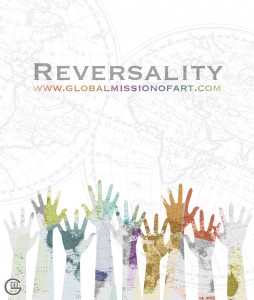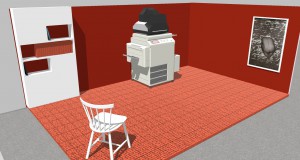Farhad Bahram
http://farhadbahram.com/
Master in Fine Arts, Photography
Department of Art
I am third year graduate student in Fine Art and currently working on my thesis which is about various qualities of communicative act in creative practice. The structure of my portfolio as an artist, since I started as a photojournalist in Iran until now that I am graduating with a MFA in the US, is mainly about the process of reception, and also the work of art as a medium that actively impacts the communicative act.
In my creative practice I mostly focus on proliferation of both participatory and process-based projects that engage with the idea of social relations outside of the conventional art spaces and through different modes of communicative act such as intervention and collaboration. I also study various channels and alternative contexts wherein I could apply those communicative modes to structure and distribute new social and cultural objects–whether in the form of social encounters or creative work of art that is no longer conceived of as noun/object but as a verb/process.
Check out Farhad’s website here.
New Media Interests:
 My interest in New Media studies originates from the same concept, particularly the way it looks at medium as an expressive cultural object. By cultural object I mean a medium that is not self-sufficient or merely related to the archeology of its existence but rather to the genealogy of its reception through the process of communicative act.
My interest in New Media studies originates from the same concept, particularly the way it looks at medium as an expressive cultural object. By cultural object I mean a medium that is not self-sufficient or merely related to the archeology of its existence but rather to the genealogy of its reception through the process of communicative act.
According to Lev Manovich in The Language of New Media, new media mostly cares about those mediums that being made for ‘distribution and exhibition’ rather than production (like film features and TV broadcasting) and storage (such as books and magazines). In other words, New Media negates the medium as predicative gesture that is fixed in time and space and solidifies a message into a single untouchable lexeme that is going to be digested by the audience.
Thinking about this concept, I centered the main trajectory of my work on examining the possibilities for transforming this determined correlation between medium and message into an ever-moving chain of relations with no fixed entities to hold onto. This effort introduces the communicative act as a subjective mechanism related to the inability of the addresser to fully express her intentions, but at the same time, her ability to enunciate a context for spontaneous realization. In fact, in this context, the study of new media helped me to establish different ways in which I could define a meta-lingual relationship between medium and message, mainly by focusing on the process of reception rather than a denotative medium such as photography, painting or even, in a broader sense, language and coding. New Media study actually made a move beyond the primacy of the text and emphasized on contextual aspects of distribution and reception. This also necessitate the building of transferrable tools, environments, and platforms –to shape a peripheral medium which actually becomes possible because of the emergence of those new methods in communication and distribution.
That being said, I believe, new media is not addressing certain issues of culture, technology or art. New media is actually introducing itself as an underway of new approaches toward the distribution of new cultural objects and the way in which they will be received. It evolves and reforms itself according to the contemporary issues raised by other fields such as art, history and empirical and human sciences. And in fact this was a new perspective that I have applied to my projects and also my research on creative act as a communicative process.
Teleography (images 1-3) is an open-call and ongoing collaborative project, that I started a few years ago, in which participants are invited to contribute photos (Teleographs), taken from their TV screen, to an online archive. By referring to the same concept that I mentioned earlier, here I was seeking out the possibility of a shift from a passive communicative process (production -> reception) to an active schema (production <-> reception <-> distribution).
Reversality (image 4-5) was another process-based and collaborative project about transforming the subjectivity of the artist, as a historical medium, into a cultural object! The project started as an international open-call in 3 phases, introducing self- determination as an enforced human right and referring to necessity of providing indigenous peoples with the option to state and freely choose how they would be addressed and identified within various cultural and political contexts. The project had been supported by Tokyo Foundation and also the Office of the High Commissioner for Human Rights (OHCHR), by receiving an international fellowship called Sylff Award in 2014.

Image 4: Reversality (2014)

Image 5: Reversality.
MFA Thesis:
My terminal creative project, «A», (image 6-7) will be an structured space that offers a communicative process in which the audience could spontaneously realizes the illegitimacy of the artist’s intention in conveying the message. The installation tries to be an obscure lexicon, consists of several indexes referring to destruction and subtraction. Each piece in this installation negates the presentation of itself as a medium. There are books that are impotent of conveying their intended message; destructed prints that are depleted from the iconic value of an image; and bodies that are unable to introduce the real identity of individuals.
Inside this destructive space that somehow invites the viewer into an engagement with the artist’s intentionality, lies an important and affirmative sentiment, which is the main objective in my thesis: the possibility of relocating the meaning from within the art object and also from the intentionality of the artist to the contingencies of the reception process.
Some good reads:

Useful Resources on New Media and Digital Culture:
On the New by Boris Groys
In terms of current readings and resource recommendations about new media, On the New by Boris Groys, the German media theorist, was a very interesting and enlightening reading for me. Here Groys investigates the continuous shifting of the line that separates culture from history, profane from sacred and thus, new from old.
And finally, I would like to close this article with the same excerpt that I started my thesis with, from a play called The Story of the Panda Bears told by a Saxophonist who has a Girlfriend in Frankfurt, written by Matéi Visniec, Romanian-French playwright:
“ HER: Say « A ».
HIM: « A ».
HER: Whisper: « A ».
HIM: « A ».
HER: Say « A » as if to say you love me.
HIM: « A ».
HER: Say « A » as if to say you’ll never forget me.
HIM: « A »
HER: Say « A » as if to say : « stay! »
HIM: « A ».
HER: Ok… Do I want a coffee?
HIM: « A »?
HER: Yes, I’d love one.
[He gets up and pours her a coffee.]
HIM: « A »?
HER: Just a small piece, thank you.
HIM: « A »?
HER: I don’t know… Though I think I prefer to eat at home.
HIM: « A ».
HER: Now, look me straight in the eyes.
HIM: « A ».
HER: Say « A » in your mind.
HIM: …
HER: Now, say « A » in your mind as if to say you love me…
HIM: …
HER: Say « A » in your mind as if to say you’ll never forget me.
HIM: ….
HER: And now I’m going to ask you something… Something very important… And you’re going to answer in your mind. Are you ready?
HIM: …
HER: « A »?
HIM: …
HER: …
HIM: …
What’s on your shelf? Interested in being the next NMCC Shelfie feature? Contact us!






